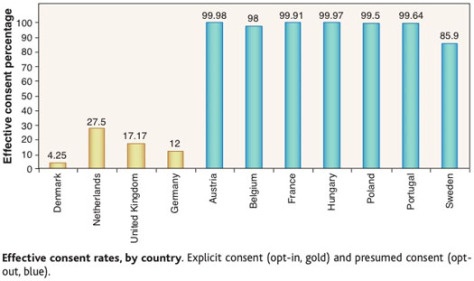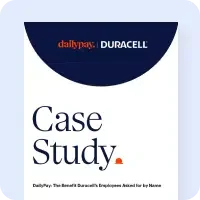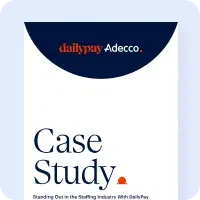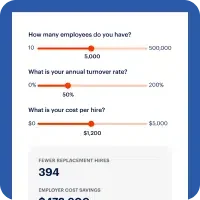Why are we talking about financial wellness benefits?
Profit & Loss is the bedrock of decision making in business. If your investments aren’t yielding desirable results, then you have to change your approach.
This is exactly why financial wellness employee benefits are essential. Your biggest investment is in your workforce, and by giving them the tools for financial fitness, you are directly boosting your bottom line.
But don’t take that at face value. Let’s look at the research:
- 72% of Americans regularly experience financial stress
- Stress in the workplace has been estimated to negatively impact productivity to the tune of $60 billion per year
- 1 million American workers miss work every day due to stress
- The above statistic results in an annual $300 billion loss in productivity
There’s no quick and dirty fix to this problem. But much of it can be attributed to a lack of financial literacy across the U.S.
- 63% of Americans can’t pass a basic financial literacy test. (Source: FINRA)
- Only 57% of U.S. credit card holders understand the concept of interest. (Source: S&P Global Financial Literacy Survey)
- More than one-third of wealth inequality could be accounted for by disparities in financial knowledge, and up to one-third of the fees and charges paid by those with lower debt literacy is due to a lack of knowledge. (Source: National Bureau of Economic Research)
While financial education isn’t the only piece of the puzzle, it seems to be a rather large one. And if the first set of stats quoted are even remotely accurate, it stands to reason that paying close attention to your employees’ financial literacy would be as step in the right direction.
“Think about it,” says Mitchell D. Weiss, an adjunct professor at the University of Hartford, management consultant, and serial entrepreneur. “If money’s a worry – you don’t have enough of it to go around, the bills are piling up, the collections companies have begun to call – how clearheaded would you be for the tasks at hand; particularly those that require creative thought?” (Source: WalletHub)
How to start offering financial wellness employee benefits
Here are some ways you can start offering your employees financial wellness benefits.
Ongoing financial education
Offering educational seminars, classes, and courses is the most obvious way to address this issue. But considering the amazing amount of resources freely available online, low financial literacy signals other deficits that need to be considered: lack of time, motivation, encouragement, and an understanding of the importance of financial literacy.
The lack of time means that educational seminars must be arranged during work hours and preferably in person. On the latter point, a busy person learning on the computer where they do all the work won’t be incentivized to focus on lessons, but instead they would likely run the risk of trying to multitask.
But will financial education be mandatory? As with getting large groups of people to do anything, it’s wise to set up a system of incentives.
“This speaks right to one of the major concerns about financial wellness programs: Will they be used?” [Mark] Lamoriello [president of Lamco Advisory Services in Orlando, Fla.] said. “You can’t force an employee to comply with a financial wellness program, so we see incentives used more frequently. Those incentives can range from small, one-time bonuses to subsidized sessions with a financial planner.” (Source: SHRM)
But education is both theory and praxis. Look to gamification strategies to encourage putting all this education to good use. With personalized educational programs, you can segment your employees by progress. Then give them at-home or at-desk assignments, like switching to a fee-free bank or spending 10 minutes every day fine-tuning their budget or opening a savings account for emergency funds.
Segmenting is important for another reason. The financial concerns of employees in their 20s are very different than the financial concerns of employees in their 50s. Adopting a “just-in-time” approach is where motivation comes in. A high-school age or 20-something employee will be more receptive to lessons on car financing, student loans, and savings goals like emergency and vacation funds, but they might be less interested in the nuances of retirement and mortgages.
By offering the time, motivation, and encouragement to transfer financial information to financial empowerment, you can engender a culture that is open about the practice of money management. By focusing your work culture on financial literacy, your employees will learn the importance of being money smart.
Additional Reading: HOW FINANCIAL WELLNESS IMPROVES EMPLOYEE ENGAGEMENT

Financial benefits and technology
Financial education is a great start, but there are other factors to take into account when addressing financial stress in the workplace. Here are a few ways to give your employee a leg up.
Student loan aid
More than 40 million Americans are currently saddled with student loan debt, equaling over $1.3 trillion. Loan-repayment programs are gaining in popularity, especially where companies are on the hunt for high-demand skills. With the U.S. jobless claims at their lowest since 1973, any company that is looking to stay competitive on the job market should consider some kind of student loan aid.
According to an IonTuition white paper:
- More than 90% of managers said that student loan debt creates stress for employees
- Approximately 80% believe this financial stress decreases employee productivity
- Nearly 80% believe offering a student loan repayment program would support talent recruitment
- 70% believe that offering such a program would improve employee retention and morale
- Nearly 85% stated that employees would enjoy the option of making their student loan payments via automatic payroll deductions.
Financial planning services and online tools
Go the extra mile in making financial wellness a way of life. Companies like LearnVest and HelloWallet offer services that help employees better manage and save their money. Programs like these can add another layer of personalization by addressing particular financial concerns, like paying for college or saving for retirement or home purchase.
Next-generation 401(k)
It’s old news to offer a 401(k) with an employer matching a percentage of an employee’s contribution. What’s new is automatic enrollment, but it’s starting to be more common, as is automated escalation, in which an employee’s savings rate is annually bumped incrementally by one or two percentage points.
However, this benefit doesn’t accommodate every financial situation, and an opt-out should be offered at time of onboarding and at any point of employment.
But automatic enrollment is effective because of a fairly well-establishment psychological principle called the default effect.
The text below is adapted from author Dan Ariely’s blog.
The graph below illustrates the difference in the percentage of the populations of various countries to consent to donating organs. Pay attention to the pairs of countries that are culturally quite similar:
- Denmark and Sweden (4.25% vs. 85.9%)
- The Netherlands and Belgium (27.5% vs. 98%)
- Germany and Austria (12% vs. 99.98%)
- The UK and France (17.17% vs. 99.91%)

How could countries with such similar populations turn out such a difference in willingness to donate organs? It’s a simple answer: the form at the DMV.
“In countries where the form is set as “opt-in” (check this box if you want to participate in the organ donation program) people do not check the box and as a consequence they do not become a part of the program. In countries where the form is set as “opt-out” (check this box if you don’t want to participate in the organ donation program) people also do not check the box and are automatically enrolled in the program. In both cases large proportions of people simply adopt the default option.”
Flexible paydays
The road from being in debt and struggling to make ends meet to being the picture of financial wellness and stability can be long. Letting your employees choose when they get paid should be one of the first steps you take toward ensuring their financial wellness.
The average American pays $1,000 per year in non-sufficient funds (NSF) and late bill pay fees. And according to Payday Loan Consumer Information:
“Payday loans range in size from $100 to $1,000, depending on state legal maximums. The average loan term is about two weeks. Loans typically cost 400% annual interest (APR) or more. The finance charge ranges from $15 to $30 to borrow $100. For two-week loans, these finance charges result in interest rates from 390 to 780% APR. Shorter term loans have even higher APRs. Rates are higher in states that do not cap the maximum cost.”
Employees who are already struggling financially will benefit from a flexible payday in a lot of ways. The biggest win for them will be the financial buffer between paydays to avoid those NSF and late fees and to avoid payday loans.
Take this example: a new mother who can’t purchase diapers in bulk will pay $0.36 per diaper at the local discount store compared with $0.14 per diaper on Amazon when purchased in bulk. That $0.22 per diaper may not sound like a lot, but when you multiply it by the 3,000 diapers in the first year of a baby’s life, that amounts to $660 per year.
This is why DailyPay exists: to play the critical role in the first steps toward your employees’ financial wellness. Financial stress is a scourge on employees and employers alike. It’s an epidemic. But with a few smart moves, employers can inoculate their employees. By extension, they’ll boost their businesses’ bottom line as well.
If you want to get started today implementing financial wellness benefits for your employees, click below to visit our Financial Wellness Resource Center and download our financial resource guide for your employees today.















